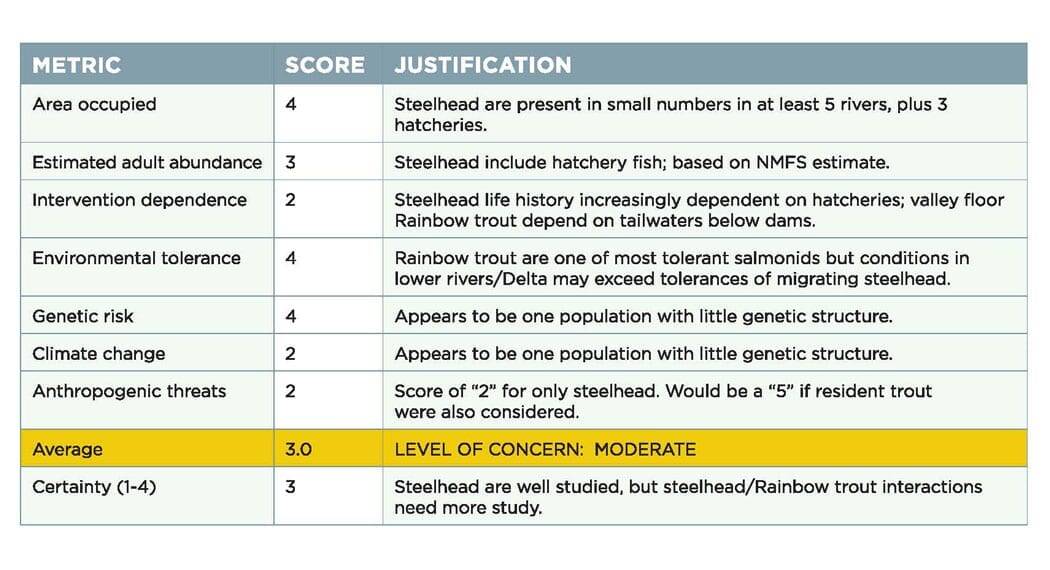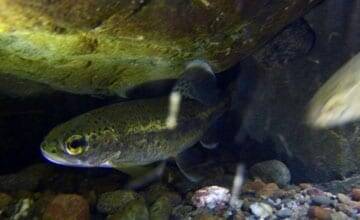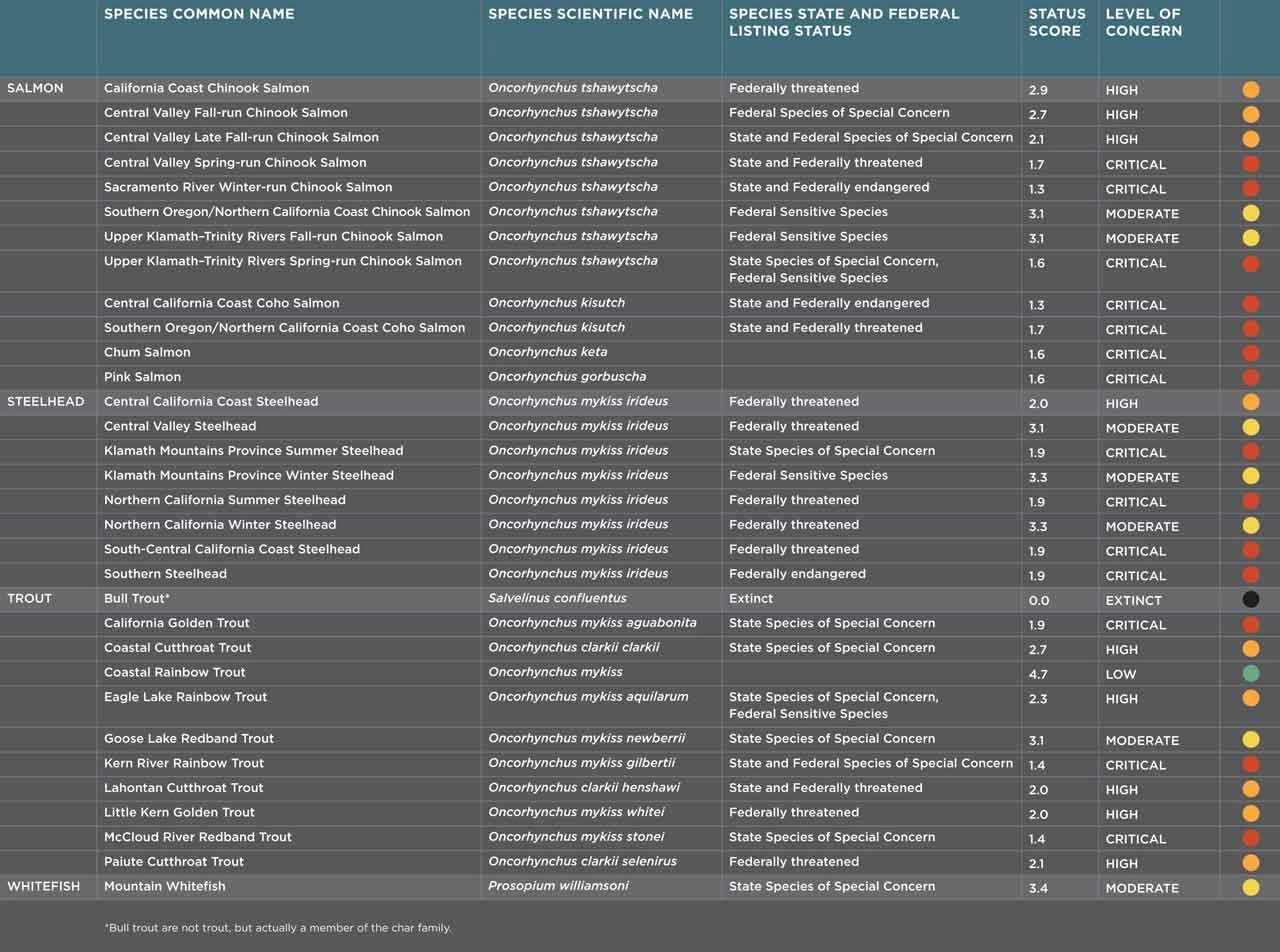How we're working to save them:
- Amend dam operations to mimic natural streamflow patterns and improve conditions that favor the anadromous life history of steelhead.
- Invest in restoration actions in the few Central Valley streams that produce wild steelhead, such as Deer and Battle creeks.
- Exclude hatchery steelhead from the DPS for management purposes, and revise hatchery practices to reduce interactions between hatchery fish and naturally spawning steelhead while producing fish to support the fishery.
- Focus fisheries management in the Central Valley on sustaining diverse, wild trout populations in tailwaters downstream of dams, and restore river and off-channel habitats.
- Investigate the causes of poor juvenile hatchery steelhead survival.
- Increase access to historic floodplain rearing habitat in the Central Valley.
Where to find Central Valley Steelhead:
Central Valley Steelhead Distribution
Historically, Central Valley steelhead inhabited the Sacramento and San Joaquin Rivers and most of their tributaries as part of a single population with resident Rainbows. There were possibly 81 discrete populations from the San Joaquin Valley north to the Pit River drainage in the past. Due to the construction of dams and water diversions, nearly 95% of previously accessible habitat to CV steelhead has been blocked or lost. Above dam Rainbow trout populations appear to retain much of this native genetic population structure. A long history of translocations of hatchery Rainbow trout and steelhead, and pervasive habitat alteration, have created a single heavily hatchery-influenced population.
How the Central Valley Steelhead Scored:


Characteristics
Historically, adult Central Valley steelhead were relatively small compared to coastal steelhead, rarely exceeding 60 cm (about 24 in.) and a few kg (about 6 lbs.). Their slender body type allows them to undertake long and difficult migrations far inland to Central Valley rivers.
Abundance
Abundance estimates for Central Valley steelhead are lacking due to the timing of winter spawning migrations during periods of high flows. Historically, it is likely that 50,000- 100,000 adult steelhead returned per year based on estimates of available habitat and food resources. in 2016, NMFS estimated that an average of 4,600 adult steelhead returned to spawn per year, including to hatcheries. in contrast, resident trout both above and below dams are abundant.
Habitat & Behavior
Today, all adult Central Valley steelhead are winter-run fish, beginning their upstream migrations to fresh water during peak flows between December and February. Returning adults are mostly three to four years old, and typically spawn from February to April. After hatching in spring and absorbing their yolk sac, steelhead fry move into deeper, mid-channel habitats in the late summer and fall. They grow quickly as opportunistic, voracious predators by feeding on aquatic and terrestrial insects, small fish, frogs and other prey. Most juvenile Central Valley steelhead feed and grow in their natal streams for one or two years before migration in late December through the beginning of May, peaking in mid-March. in general, both juveniles and resident adults prefer complex habitat boulders, submerged clay and undercut banks, and large woody debris that provide feeding opportunities, segregation of territories, a refuge from high velocities, and cover from predators.
Genetics
Below dams in the Central Valley, resident trout and steelhead, including hatchery steelhead, form one genetic population that bears the signature of genetic input from introduced North Coast hatchery steelhead. The highly altered Central Valley rivers today favor fish that exhibit the resident life history, which has a genetic basis and can evolve rapidly from ancestral steelhead. Both natural and hatchery steelhead are in decline, suggesting that the anadromous life history itself is not sustainable in the highly altered Central Valley.






















 Dams block access to historical spawning and rearing habitats. Downstream, dams alter the timing, frequency, duration, magnitude, and rate of change of flows decreasing habitat quality and survival.
Dams block access to historical spawning and rearing habitats. Downstream, dams alter the timing, frequency, duration, magnitude, and rate of change of flows decreasing habitat quality and survival.